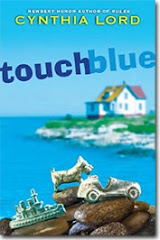When we selected Geektastic for our January book, we found the story behind the book on editor Alvina Ling's blog, Bloomabilities. Did you know that when the project went to auction, Alvina submitted her geek-creds in a formal resume?
Given Alvina's clear enthusiasm for the project, we asked her to share her thoughts on writing and editing short stories. Alvina's responses to our questions follow:
1. As an editor, what do you look for in a short story versus a novel?
Well, as GEEKTASTIC was the first short story collection I've edited, I can't profess to being an expert, but I will say that I look for almost the exact same things in a short story as I do in a novel: strong voice, compelling plot, fascinating characters-just in a shorter form!
2. What nugget of advice would you offer to our readers interested in writing short story collections?
To be perfectly honest, if you're looking to be published in the Young Adult or children's market, short story collections are not the best way in! They're really tough sells, especially in the trade (bookstore) market, and most publishers aren't actively looking for them. In the case of GEEKTASTIC, however, it had such a strong and obvious hook. The title itself says it all. If you're writing a short story collection, I would make sure you have a very clear hook/theme. Some good examples are 21 Proms by David Levithan and Daniel Ehrenhaft, and Grl2Grl by Julie Anne Peters.
3. What craft elements do you consider critical for short stories as compared to longer works?
Again, I don't profess to be an expert with short stories, but I would say that short stories need a tighter, simpler plot with fewer back stories and side stories: the story will need a beginning, climax, and end, the same thing that a good novel needs, but all of this must happen within a shorter word count.
4. What is different for you in terms of editing a short story collection vs. editing a novel?
Well, in this case the collection was edited by Holly Black and Cecil Castellucci. The way we decided to handle this was that Holly and Cecil would work with the authors until they felt that the story was final, and then I would edit it. Because of this, by the time the stories reached me, for the most part they were in really good shape. Plus, all the authors are pros! So I actually did very light editing. In a few cases, what I mainly did was suggest places to tighten and cut for some of the longer stories.
5. Were you surprised by the direction of any of the stories in Geektastic?
To be perfectly honest, I didn't know what to expect, so once the stories started coming in I was pleasantly surprised by all of them! But to name two that I was probably surprised by most: I loved that Lisa Yee's story turned our definition of "geek" upside-down. I also loved Kelly Link's story--we had specified that we didn't want genre stories--so no science fiction or fantasy, etc. Kelly's story had a bit of fantasy in it (or shall we say, an alternate reality?), but we were happy to let that slide because the story was so awesome.Thank you, Alvina, for taking the time to answer these questions!
Alvina Ling is senior editor at Little, Brown Books for Young Readers. In addition to being editor for Geektastic, she was also the editor of Grace Lin's middle grade novel Where the Mountain Meets the Moon, which won a Newbery Honor earlier this month.



.jpg)




